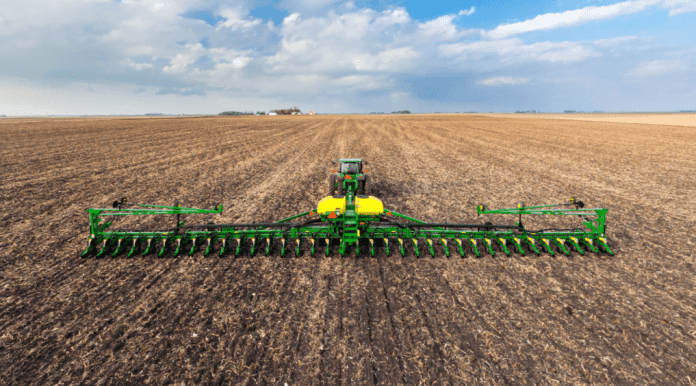John Deere’s precision agriculture strategy was developed more than 10 years ago, and as a testament to its belief that farming is just outdoor manufacturing, the company is using what it’s learned from this success to improve and optimize its own internal manufacturing processes. At last week’s Connect EXPO in Denver, Kiel Ronning, Industry 4.0 lead for Enterprise Manufacturing Technology at Deere told RCR Wireless News that the objective is to transform factory safety and improve the quality and delivery of its products.
“You saw the capabilities of precision agriculture using sensors, collecting data, using that data to drive improvements in yields and productivity for the customers, as well as sustainability capabilities,” he continued, referring to my recent hands-on experience at John Deere’s test farm in Iowa. “We are trying to do the exact same strategy, but in factories.”
Farming is a process; so is manufacturing
While certainly different, farming and manufacturing have one crucial thing in common: “Farming is a process; manufacturing is a process,” Ronning said. “You’re talking about seed placement and attributes of placing a seed [in farming]. Here we’re talking about attributes of placing components and the manufacturing steps to perform that.”
The variety and volume of measured elements may be more in manufacturing — several machine components as opposed to just seeds — but, according to Ronning, it’s all still the same dimensions. “Precision agriculture is latitude, longitude and time. We are doing the same thing in the factories. Maybe the sensor readings are pressure and temperature instead, but you still need to know where something happens, when something happens,” he said.
It wasn’t just the precision technology and data models that informed Deere’s internal team. Ronning explained that over the last two years, the company changed its approach to customer management. The company used to have a combine team, a tractor team and so on. Now, it is more processed focused, organizing around production agriculture systems so that there is a team dedicated to soybean or corn farmers, for example. It’s a more end-to-end, process-centric approach.
“Now we have a similar strategy in our factories,” he added. “We’re looking at it in a process-centric way instead of machining center optimization because otherwise, you end up suboptimizing the system as a whole if you focus too much on any one step.”
Unlocking additional gains with private 5G
Deere turned some heads when it obtained 5G licenses in five Midwest counties as part of the Federal Communications Commission (FCC) auction for the Citizens Broadband Radio Service (CBRS) 3.5 GHz spectrum back in 2020.
According to Ronning, lots of people had questions, wondering what the company’s plans were for the spectrum. “It’s an internal capability,” he provided. “We’ve stood up a couple of networks in our factories today and we are able to justify data collection strategies that we couldn’t before because running wired connections requires switch capacity, conduit [and] all the labor to actually install these and it becomes cost prohibitive.”
But with cellular, he continued, configuration can be done in minutes for “less than a couple hundred dollars,” allowing the company to justify data collection on elements for which it didn’t previously have a valid business case.
“That’s starting to unlock additional gains and improvements,” he said.
Also critical here is the need for private cellular networks, which gave Deere a new and more reliable way to connect to all of the necessary sensors, while adding bandwidth and capacity. A network challenge yet to be solved, though, is how to manage transitioning from inside its factory walls to the network beyond them.
“Manag[ing] that transition between a private and public network, that’s a really appealing capability for us because that allows us to collect data of things in transit, either inbound or outbound. We don’t have that problem solved,” Ronning stated, adding that right now, the company is exploring some solutions like geolocation tracking devices.

